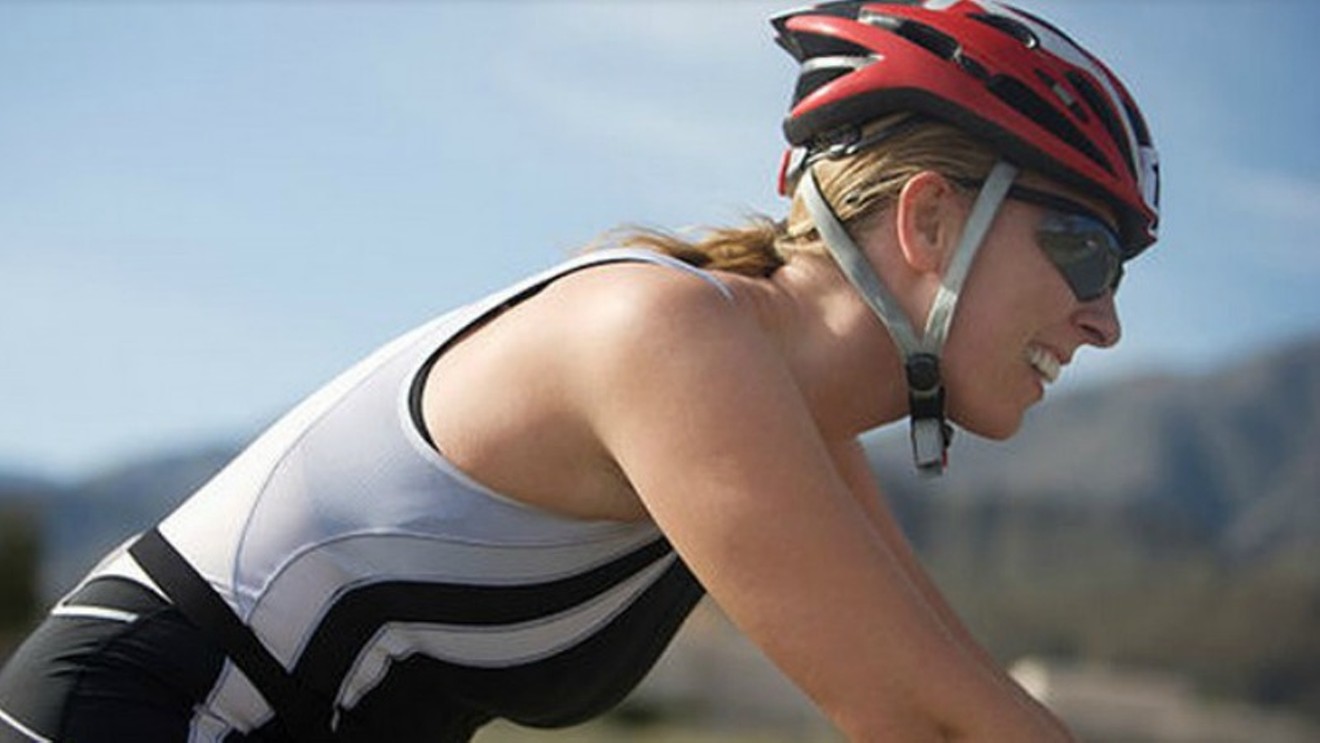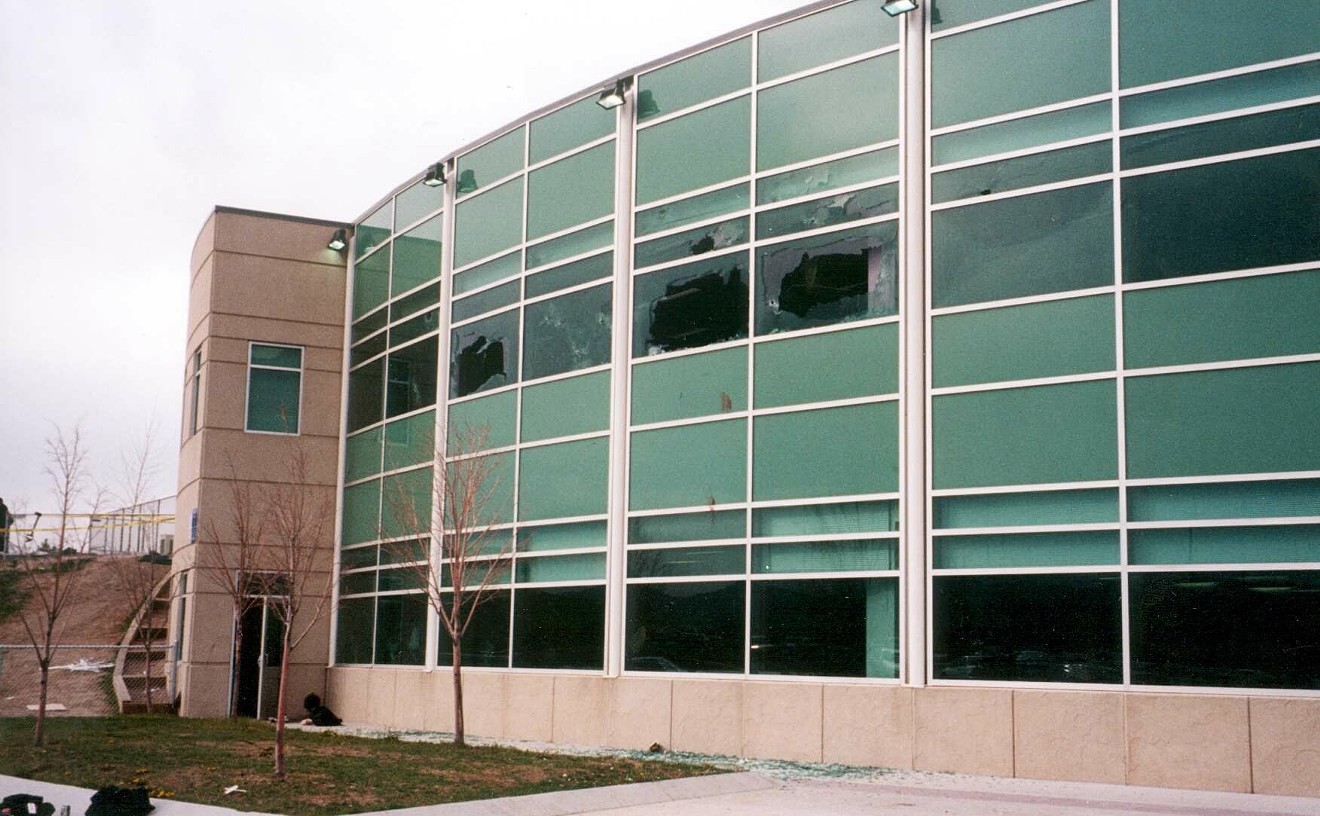This week marked the death of legislation that would have allowed cyclists to treat red lights and stop signs as yields at intersections with no oncoming traffic. Because the so-called "Idaho stop" bill failed to escape the state Senate's transportation committee, bike riders who roll past stop signs even when the route is clear will be breaking a state law that's already filled with plenty of oddities and quirks.
To show you what we mean, we've assembled a rules-of-the-road cycling quiz drawn from statutes shared on coloradobikelaw.com.
As you'll see, some things that you probably thought were perfectly legal aren't. And that's not to mention rules that most casual cyclists never considered, like how long, exactly, two-wheeled travelers are supposed to signal a turn and whether the law requires them to say something as they pass a pedestrian.
Put yourself to the test below.
Question 1: Is it legal to give someone a ride on your bicycle?
Answer: Not in Colorado — unless your bike is specifically made for multiple passengers. The key passage in the statute reads: "No bicycle or electrical assisted bicycle shall be used to carry more persons at one time than the number for which it is designed or equipped."
Question 2: Can cars legally give bikes a tow?
Answer: Sorry — that's expressly forbidden. The statute on this topic reads, "No person riding upon any bicycle or electrical assisted bicycle shall attach the same or himself or herself to any motor vehicle upon a roadway."
Question 3: Are cyclists ever permitted to use the left lane?
Answer: Yes, under certain specific circumstances. Here are three of them: "A. Preparing for a left turn at an intersection or into a private roadway or driveway; B. Overtaking a slower vehicle; or C. Taking reasonably necessary precautions to avoid hazards or road conditions."
Question 4: How long are cyclists supposed to signal a turn?
Answer: The statute interprets this question in terms of distance — at least 100 feet — rather than time. It reads, "A signal of intention to turn right or left when required shall be given continuously during not less than the last one hundred feet traveled by the bicycle or electrical assisted bicycle before turning and shall be given while the bicycle or electrical assisted bicycle is stopped waiting to turn." But there's one exception: "A signal by hand and arm need not be given continuously if the hand is needed in the control or operation of the bicycle or electrical assisted bicycle."
Question 5: Is it okay for two cyclists to ride side by side?
Answer: Not usually, as is stressed in this passage: "Persons riding bicycles or electrical assisted bicycles two abreast shall not impede the normal and reasonable movement of traffic and, on a laned roadway, shall ride within a single lane." But bike lanes are considered a different story: "Persons riding bicycles or electrical assisted bicycles upon a roadway shall not ride more than two abreast except on paths or parts of roadways set aside for the exclusive use of bicycles."
Continue for the rest of our Colorado rules-of-the-road bike quiz, with more surprising revelations.
Question 6: Must you say something to pedestrians you pass?
Answer: Yes — by law. But there's no specific script. In fact, you don't even have to use words — just offer an "audible signal." According to the statute, "A person riding a bicycle or electrical assisted bicycle upon and along a sidewalk or pathway or across a roadway upon and along a crosswalk shall yield the right-of-way to any pedestrian and shall give an audible signal before overtaking and passing such pedestrian."
Question 7: Can the driver of a car get in trouble for passing a cyclist too closely?
Answer: Yep, and the statute provides a specific minimum distance for compliance: three feet. As noted in this section, "The driver of a motor vehicle overtaking a bicyclist proceeding in the same direction shall allow the bicyclist at least a three-foot separation between the right side of the driver's vehicle, including all mirrors or other projections, and the left side of the bicyclist at all times."
Question 8: Is night the only time when a cyclist is required to use a light?
Answer: No. Under law, lights must be used during certain types of bad weather, too. The lengthy explanation: "Every vehicle upon a highway within this state, between sunset and sunrise and at any other time when, due to insufficient light or unfavorable atmospheric conditions, persons and vehicles on the highway are not clearly discernible at a distance of one thousand feet ahead, shall display lighted lamps and illuminating devices as required by this article for different classes of vehicles, subject to exceptions with respect to parked vehicles."
Question 9: May I put a whistle on my bike? Please?
Answer: Strangely enough, no. In fact, whistles are expressly forbidden, as is another noisemaker. "A bicycle or electrical assisted bicycle shall not be equipped with, nor shall any person use upon a bicycle or electrical assisted bicycle, any siren or whistle," the statute says — and any person who violates this provision "commits a class B traffic infraction."
Question 10: When are these rules null and void?
Answer: When they're trumped by local ordinances. From a cycling standpoint, municipal regulations are first among equals. The statutory description: "This article shall not be deemed to prevent local authorities, with respect to streets and highways under their jurisdiction and within the reasonable exercise of the police power, except those streets and highways that are parts of the state highway system, from...regulating the operation of bicycles or electrical assisted bicycles and requiring the registration and licensing of same, including the requirement of a registration fee." As a result, rules may shift from city to city without the average cyclist knowing it. So good luck trying to do the right (and legal) thing.
[
{
"name": "Air - MediumRectangle - Inline Content - Mobile Display Size",
"component": "12017618",
"insertPoint": "2",
"requiredCountToDisplay": "2"
},{
"name": "Editor Picks",
"component": "17242653",
"insertPoint": "4",
"requiredCountToDisplay": "1"
},{
"name": "Inline Links",
"component": "18838239",
"insertPoint": "8th",
"startingPoint": 8,
"requiredCountToDisplay": "7",
"maxInsertions": 25
},{
"name": "Air - MediumRectangle - Combo - Inline Content",
"component": "17261320",
"insertPoint": "8th",
"startingPoint": 8,
"requiredCountToDisplay": "7",
"maxInsertions": 25
},{
"name": "Inline Links",
"component": "18838239",
"insertPoint": "8th",
"startingPoint": 12,
"requiredCountToDisplay": "11",
"maxInsertions": 25
},{
"name": "Air - Leaderboard Tower - Combo - Inline Content",
"component": "17261321",
"insertPoint": "8th",
"startingPoint": 12,
"requiredCountToDisplay": "11",
"maxInsertions": 25
}
]



















